Ceramic Culture Hall

-
The Ceramic Culture Hall is offered to help citizens better understand
ceramic relics and artworks. It provides knowledgd of ceramic history and
production techniques. Various exhbits, films, models, microscopes, and
audio-visual materials are used to help participants learn about ceramics.
Exhibition from permancent collection

-
The permanent collection of relics and artworks is on display.
Gallery 1 on the second floor shows Wonder Porcelains from Goryeo and
Joseon, with selected 50 masterpieces from Goryeo Dynasty to the joseon
Dynasty. Gallery 2 on the same floor shows Modern Korean Ceramics,
with 50 artworks of Korean contemporary ceramists in order to proposing
the future dirction of Korean ceramics.
1) Celadon from Goryeo
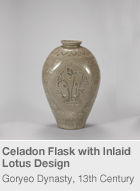
- Celadon wares are among the most widely admired of Goryeo's craftworks. Goryeo was the second nation to produce celadon after China, soon becoming the unrivaled celadon producer. Diverse designs related to Goyreo people's ideals, lives and their natural environment elaborated the surface of functional yet beautiful celadon wares. The green glaze(bisaek) celadon that radiates sky blue, inlaid celadon that demonstrates the zenith of ornamentation, and figurative celadon that embodies various types of animals illustrate the high cultural level and artistic quality of our predecessors.
2) Buncheong from Joseon
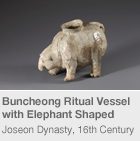
- Production of buncheong in the early Joseon, which succeeded the tradition of sanggam celadon of the Goryeo Dynasty in the 15thcentury, spread throughout the country. Buncheong continued to be produced until the late 16thcentury. During this period, Joseon baekja was being developed, and buncheong and baekja coexisted. It could be said that baekja manifested majesty and for the cause of the new nation and royal family, while buncheong freely manifested the feelings of the common people. The diversity of shapes of buncheong and unique characteristics of buncheong came into being after unpredictable eliminations and transformations. This was possible because of the passion of ordinary people who became freer in the new world afforded by the founding of Joseon Dynasty after the dark and desperate period of the late Goryeo Dynasty.
3) Power of Silence, Joseon White Porcelains
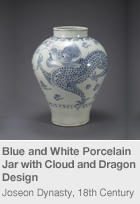
- In the 15th century, Joseon Dynasty was founded in the Korean peninsula that initiated cultural renaissance to lead the new kingdom the nation as one of leading culture-oriented country. Ceramics also developed during the period by receiving the high-fired porcelain production technique from Jingdezhen, China. Joseon white porcelain, however, was developed its unique style of majestic yet frugal porcelain which was differentiated from Chinese grandeur and colorful porcelain.
Sepcial Exhibition Hall

-
The Special Exhibition Hall on the first floor presents special exhibits
all the year round. New and interesting exhibits will be introduced under
projective theme.
Onggi@Korea [2010. 11. 30 ~ 2011. 3. 31]
-
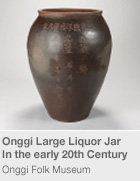
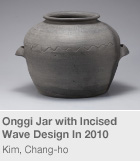
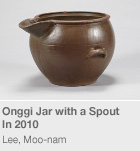
- Korean ceramics are represented by Goryeo celadon, buncheong ware, Joseon white porcelain and onggi. However, introduction of new and cheap material such as plastic and stainless, and change of living environment and life pattern, caused the sharp decline of demand for onggi. Thus one by one onggi studios were closed down and onggi gradually disappeared in our daily living.
It was in the beginning of the 1990s that the first and second generations of onggi potters and onggi artists of college graduate led a move of succeeding and preserving onggi. These little movements called people's attention to the historic and aesthetic value of onggi, thus bringing new understanding and vision of onggi and restoring a communication between tradition onggi and the contemporaries and as well as expansion of its use.
Gyeonggi Ceramic Museum prepares the exhibit, 'Onggi@Korea' reflecting the trend of today's. This exhibition will help visitors better understand the historic and aesthetic value of onggi. Traditional Korean onggi has begun to follow the tracks of celadon, buncheong and porcelain which succeeded the tradition in the right path, and onggi is changing little by little.








